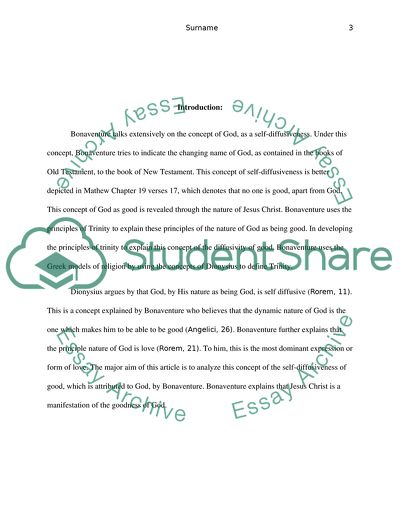Cite this document
(Dionysius on Self-Diffusiveness Literature review Example | Topics and Well Written Essays - 1750 words, n.d.)
Dionysius on Self-Diffusiveness Literature review Example | Topics and Well Written Essays - 1750 words. https://studentshare.org/religion-and-theology/1861451-list-of-topics-will-be-attached
Dionysius on Self-Diffusiveness Literature review Example | Topics and Well Written Essays - 1750 words. https://studentshare.org/religion-and-theology/1861451-list-of-topics-will-be-attached
(Dionysius on Self-Diffusiveness Literature Review Example | Topics and Well Written Essays - 1750 Words)
Dionysius on Self-Diffusiveness Literature Review Example | Topics and Well Written Essays - 1750 Words. https://studentshare.org/religion-and-theology/1861451-list-of-topics-will-be-attached.
Dionysius on Self-Diffusiveness Literature Review Example | Topics and Well Written Essays - 1750 Words. https://studentshare.org/religion-and-theology/1861451-list-of-topics-will-be-attached.
“Dionysius on Self-Diffusiveness Literature Review Example | Topics and Well Written Essays - 1750 Words”. https://studentshare.org/religion-and-theology/1861451-list-of-topics-will-be-attached.


